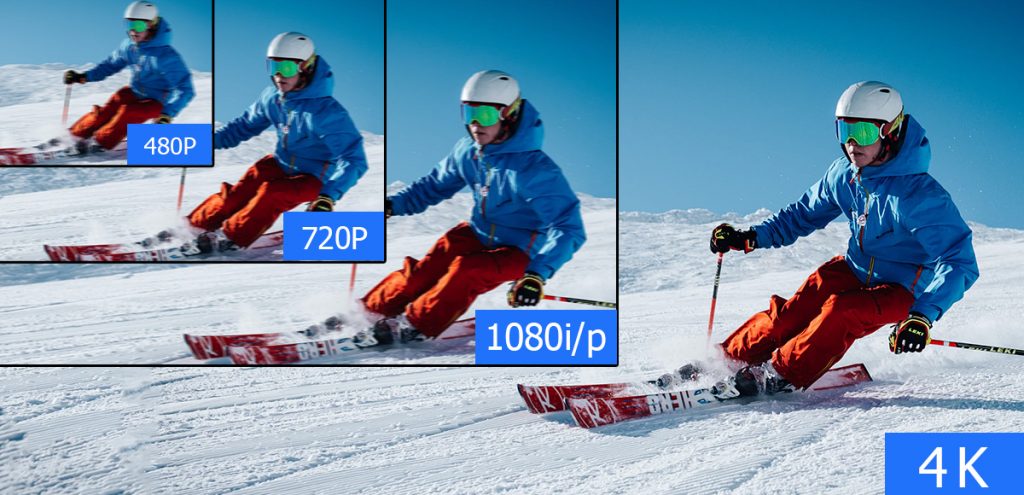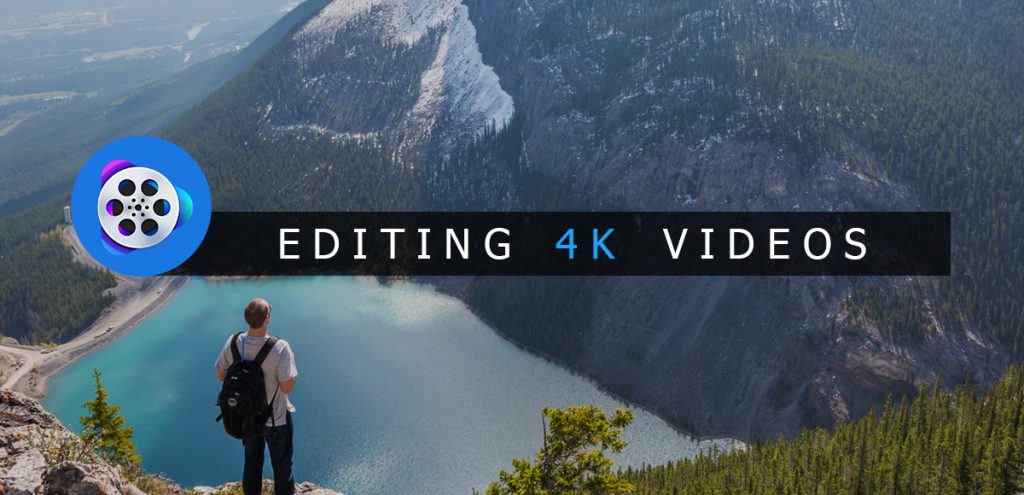What is 4K Video?
4K is a video specification standard which refers to two HD resolutions: 4096 x 2160 pixels and 3840 x 2160 pixels. These videos will give you higher definition quality, detailed picture and the larger projection on surface visibility. 4K videos have nearly 8 million pixels, four times higher image definition than 1080p HD videos. With the increase in TV screen size as well as the projectors, the 4K videos are essential to provide more detail and less pixel visible images than 1080p. You can shoot 4K videos with compatible cameras and smartphones. Various smartphone brands and camera brands supports recording 4K videos. Visit this Wikipedia page to find out the complete list of 4K video recording devices. Even though 4K videos have a better picture quality, it also has certain disadvantages. The major downside is that 4K videos require larger bandwidth and they will consume more storage space than 1080p videos. You can go to calculate video size of a 4k video.
What is 4K Video Processing?
It is the process of converting encoding 4K videos, changing its characteristics and converting it to the video that matches different screens, storage media and more. In simple words, 4K video processing is all about decoding, editing, resizing and converting it into the supported format. 4K video processing is of five different stages: Input video, decoding, post-processing, encoding and output video. Input video: Adding the 4K video that shoots in different formats like H.264 Video, MPEG-2 Video, MOV QuickTime Video HEVC/H.265 Video and more. Decoding: It involves decoding the video stream into a large number of raw video frames. Post-processing: The post-processing involves editing, compression and 4K video scaling. The editing requires splitting, integrating and re-arranging the video into the supported format. Compression reduced the overall size of the video, and the 4K video scaling involves the process to reduce the bandwidth consumption. Encoding: The stage of converting the 4K video from un-supported format to the supported format and thereby making it accessible on different screens and devices. Output video: Process of getting the output video in the supported format. Converting the 4K video into the supported format is not an easier task, and it needs a standard and popular video processing software like VideoProc.
VideoProc – A Quick 4k Video Processing Software
for Windows and Mac
VideoProc is available for both Windows and macOS platforms. The software works with all kind of video formats. It doesn’t matter whether you’re a seasoned pro or rookie, VideoProc 4K video editor lets the user edit and convert 4K videos easily and quickly. Along with the basic video features like cut, split, merge and convert, it also has hardware acceleration support to edit and transcode the 4K videos without compromising the quality. Here are some of the major features of VideoProc: Cut: Use this feature to remove the unwanted segments and re-arrange the remaining clips to short your video as soon as possible. Merge: Join different video files to create a new one. Crop: Remove the unwanted or distracting portions on your video. Subtitle: Add subtitle to your video. You can also extract subtitles from the movie. Effect: Add special effects and filters to enhance your video. Rotate/Flip: Rotate or flip your video in all directions. Download Videos: VideoProc has inbuilt support to download the videos and audio from 1000+ supported websites. It includes YouTube, Facebook, SoundCloud, Dailymotion and many more. Screen-recorder: It also has a powerful screen recorder to record your desktop screen along with the voiceover.
How to Edit 4K Video Smoothly on Any Computer
Final Thoughts
VideoProc is an essential tool for video editors as it meets all the video editor requirements. Both Windows and macOS users can download the software from the official website. Make sure of the trial version to test out the features. The premium version costs only $29.95/year and $42.95/life time along with the 30-day moneyback guarantee. Thank you for visiting techfollows.com. Follow our social media profiles: Facebook and Twitter for the latest updates.




